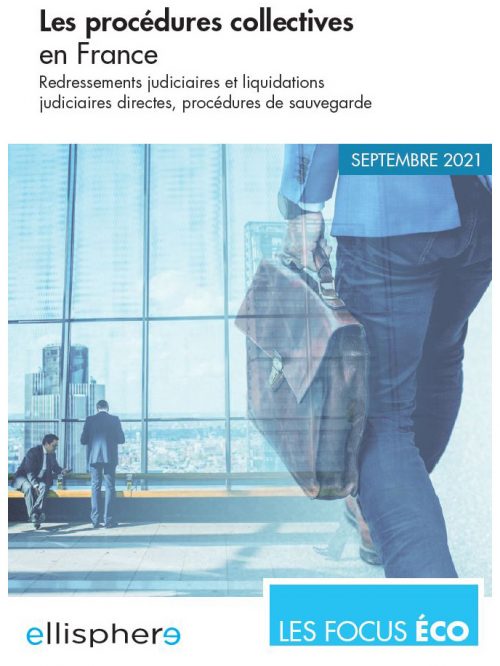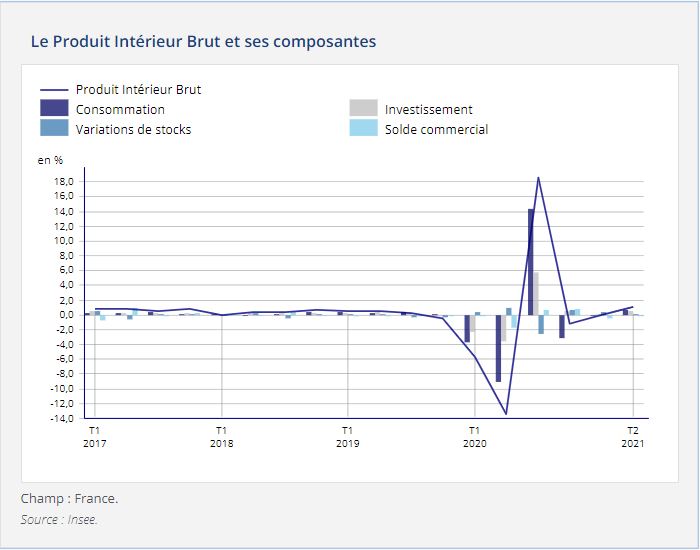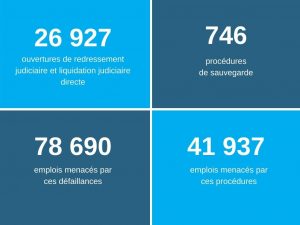An economy between recovery and savings, against a background of inflation
As the exceptional state support measures for the economy - the "Whatever it Takes" - are gradually being put in place, the French economy is showing a marked economic rebound: INSEE has raised its GDP growth forecast to 6.25% for 2021, while the Banque de France is expecting growth of 6.3%.
As for household consumption, while spending has increased over the last few months, caution is still the order of the day and precautionary oversaving remains high, with 157 billion euros saved since the beginning of the health crisis.
Currently, in their baskets, consumers are also facing an increase in constrained expenses, such as energy prices (gas and fuel in the first place), and those of food products with an expected annual inflation of 2.2% according to the ECB.
"Several reasons explain the difficulties of agriculture: the deterioration in pig farming, agricultural calamities with the periods of frost, drought and flooding that we have experienced, as well as tensions on the fishing sector, following the Brexit; tensions that continue with the Island of Jersey, which, for example, has granted 95 fishing licenses to French boats but has refused at the same time 75."
- Max Jammot, Head of the economic department at Ellipshere

Sectors and regions more affected
On the professional side, sectors such as Construction and Public Works (BTP), Automotive, Toys and Electronics are experiencing a shortage of raw materials and components, slowing down production and delivery chains. In addition to this, prices are rising: energy, metals, agricultural raw materials, construction materials - and their transport costs. This increase should ultimately be passed on to sales prices.
In some economic sectors, such as the hotel and catering industry and retail trade, the recovery appears to be more hesitant this autumn. As for Industry (textiles, metallurgy, automotive, capital goods), morale and order books seem to remain at half-mast in the short and medium term.
However, at the end of September 2021, over a sliding 12-month period, the trend has reversed for certain sectors. The deleterious effects of a chaotic year are now clearly visible in the Agriculture and Fishing sector, where the number of insolvencies has risen by 3.2% year-on-year. In this sector, it is the Fishing & Aquaculture segment that is suffering the most in a context of post-Brexit difficulties, with fishing permits being refused on an increasing scale. Thus, over the period studied, insolvencies are up 27% and now exceed the results of 2019. Finally, meat producers are also more widely affected.
In the regions, the trend is still downwards for the number of insolvencies over the 12 months to the end of September and over the quarter.Ile-de-France, PACA and Auvergne-Rhône-Alpes still account for 50% of the podium. However, the top two regions, Ile-de-France and PACA, posted smaller declines than the rest of France (down 18%). The recovery in these two regions, which are more dependent on tourism and real estate activity, appears to be more difficult. While the number of safeguard procedures is clearly increasing in the Grand Est (+18.2%), Normandy (+16.1%) and Ile-de-France (+5.4%) regions.
Which companies are the most affected? Very Small Enterprises (VSE) are the most affected by direct receiverships (RJ) and liquidations (LJ), as well as by safeguard procedures (PS) with respectively 91.2% and 67.1%.
Depending on the age group, companies between 5 and 20 years of existence are the most affected by RJ, LJ and PS.
Collective procedures, a summer on the soft side
In this context, at the end of September 2021 (on a rolling 12-month basis), there are :
At the end of September 2021, over a sliding 12-month period, the number of business failures (opening of receivership and direct judicial liquidation) and the number of safeguard procedures fell, with the result of -25.3% and -8.4% respectively. However, these decreases are less significant than at the end of 2020 (-38% and -15.5% respectively).
However, in front of the judges, the fate of companies is still largely sealed by direct judicial liquidation, which accounts for 77% of business failures.
What financial impact do these business failures have?
At the end of September 2021, 50% of supplier debts concern SMEs, closely followed by ETIs. Over a 12-month rolling period to the end of September 2021, the rate of supplier debts in the liabilities of companies in receivership or direct judicial liquidation, at 26.6%, has returned to a level close to that of 2018 (26.9%).
Bank debts also concern mostly SMEs (51.8%) and SMIs (48.7%), the former in the context of receiverships or direct judicial liquidations, the latter in the context of safeguard procedures. Furthermore, even though it has increased significantly at the end of September 2021, the proportion of bank debt in company liabilities remains lower than that recorded in 2019, both for insolvencies (RJ and LJ) and for safeguard procedures.
#FocusEco
What is the state of play for business failures at the end of September 2021?
In this context, which remains complicated, at the end of September 2021, over a 12-month rolling period, the general trend in insolvency proceedings remains downward. Zoom in with our study on the main findings on the situation of companies.





